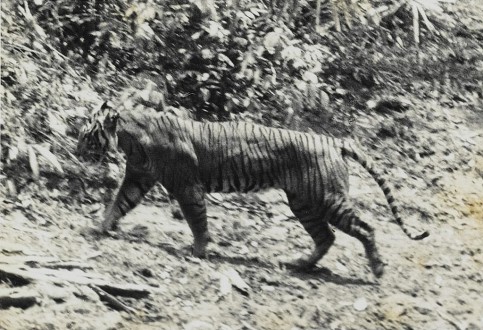- Communities near Meru Betiri National Park have embarked on a reforestation and forest rehabilitation initiative with NGO assistance.
- Economic incentives include the sale of produce grown in the area and carbon credits from protecting it.
- The community is looking at various carbon-dense trees to maximize the value of their contribution to the program.
Few places offer a glimpse of Indonesia’s forlorn environmental track record like Meru Betiri, a 58,000-hectare national park tucked away in the southeast corner of Java island. The park is perhaps best known as the last-known sighting of the Javan tiger (Panthera tigris sondaica) before it was declared extinct in the 1990s. Today environmentalists and the local community are working on a pilot program that offers some hope of a change in direction.
“The people living around the forest should be engaged to defend the forest,” Arif Aliadi, a community organizer with the Indonesian Institute of Tropical Nature (Latin), told Mongabay. “If they maintain the forest, then they benefit. It’s not just money from produce, there is also the sale of carbon.”
Indonesia’s vast land mass spanning three time zones was almost entirely covered in forests at the beginning of the 19th century. Today around half of its tropical forests has disappeared, with an estimated 6 million hectares lost between 2000 and 2012. A moratorium on new logging concessions on virgin “primary” forest was announced in 2011, but the evidence indicates it has failed to stop the rot. Meanwhile annual dry season fires have erupted on 2 million hectares of land this year as the El Nino weather phenomenon prolongs the annual burning season.

Latin is one of a clutch of environmental NGOs trying to prune Indonesia’s growth in forest loss. In Meru Betiri, it is one of the organizations working on implementing a carbon-trading platform designed to pay communities to reforest lost areas or keep existing trees in the ground.
“Let’s say in 10 years from now around 400 hectares of forest is destroyed,” Arif said. “Suppose that 50 percent could be protected and the people pledge to conserve 200 hectares – if this is the community’s commitment then it can be certified and sold.”
In Meru Betiri, the local community has marked up 16 hectares in the 58,000-hectare national park. It’s a small start, but activists hope the scheme can be scaled up. The next step is to plant fruit trees on these plots, which will give the community a source of income and, the hope is, preclude the need to cut down the trees themselves to earn a living.
“The money we earn will later we put back into rehabilitating the forests,” Nurhadi, chief of Curahnongko and Andongrejo villages, told Mongabay. “For example if 100 percent of the cost is met then we can mark 60 percent for rehabilitation and 40 percent for [strengthening governance].”
Latin’s role in this is to facilitate certification after the complex monitoring, reporting and verification criteria are met at the proposed site.
Certificates are issued after an agreement is reached on the duration carbon will be sequestered in a particular area. The potential carbon stores are counted and the certificates issued with corresponding dollar value.
The community in Meru Betiri together with Arif is looking at various carbon-dense trees to maximize the value of their contribution to the program. Tamarind (Tamarindus indica) falls under that category. So, too, does Parkia timoriana, a flowering tree which grows quickly and can reach up to 30 meters in height. Joho lawe (Terminalia bellirica) and bishopwood (Bischofia javanica) are other possibilities, both rich in carbon and quick to grow.
“When we’re rehabilitating the forest, of course we want to plant larger and more verdant trees,” he said. “They store more carbon.”
Nurhadi said the overriding mood is one of enthusiasm. The community, he said, is sold on the long-term vision and he remains optimistic that the carbon trading scheme can be implemented successfully.
“One thing about this carbon scheme is that it gives people the ability to manage the forest sustainably but it’s also necessary to improve the welfare of the community,” he said. “Carbon trading is an incentive for people who have been planting trees in areas that have been deforested.”
He remains wary, however, of appearing complacent.
“Up to now there really hasn’t been anything in Indonesia so under this program we hope to be the first to attract buyers.”
